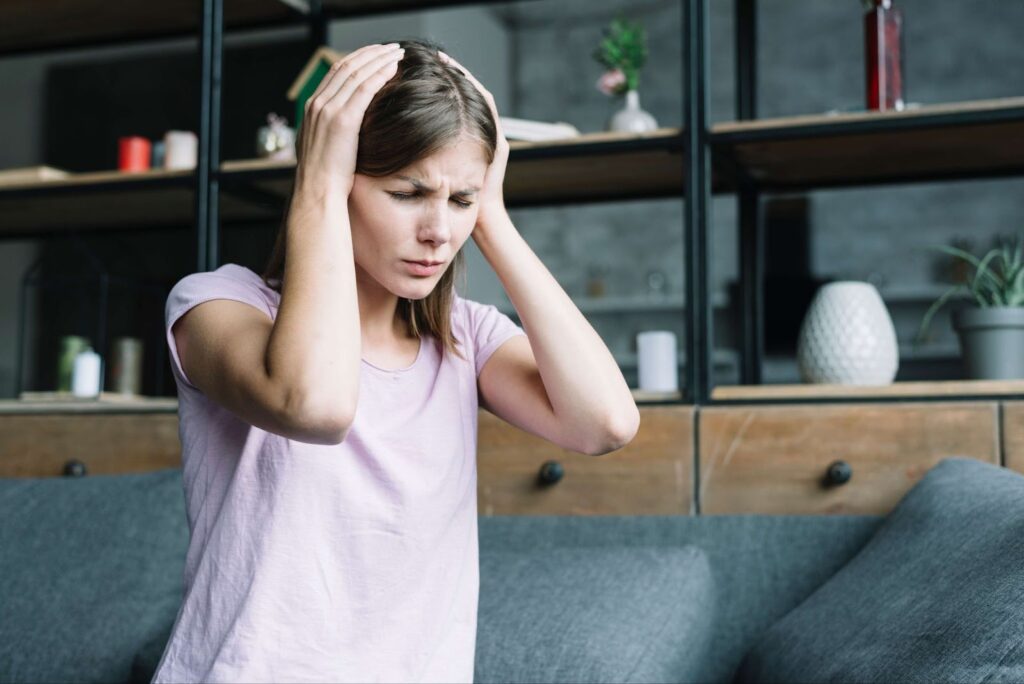Welcome to the realm of relief! In the quest to alleviate the debilitating effects of migraines, medical science has uncovered a potent elixir that holds promise for sufferers worldwide. Join us on this journey of discovery as we delve into the depths of the “Migraine Elixir” – a promising remedy that offers hope and respite to those plagued by these relentless headaches. Explore the science, the benefits, and the potential behind this remarkable find, as we unveil the secrets of this powerful potion and its potential to transform the lives of millions.
Unleashing the Power of the Migraine Cocktail
When the excruciating grip of a migraine takes hold, finding swift and effective relief becomes an urgent quest. This is where the enigmatic “Migraine Cocktail” comes into play, a combination of medications and treatments that promises to alleviate the throbbing torment of migraines. The versatility of this therapeutic elixir allows it to be administered in various settings, including at home, in an outpatient infusion center, or even during a hospital stay.
Administering the Migraine Cocktail
The delivery of a Migraine Cocktail is carefully tailored to the needs of each individual patient. The most common method involves receiving the cocktail intravenously (IV) when seeking treatment in the emergency department. The advantage of this approach lies in the rapid onset of relief, providing respite from the debilitating symptoms.
Ingredients of the Migraine Cocktail
While the specific composition of the Migraine Cocktail may differ depending on the patient’s unique condition, there are some key ingredients frequently found in this mystical blend:
- Non-Steroidal Anti-Inflammatory Drugs (NSAIDs): These drugs, such as ketorolac, are included in the cocktail to tackle inflammation and alleviate pain. They form the backbone of the treatment;
- Magnesium: Known for its muscle-relaxing properties, magnesium contributes to easing the tension and constriction that often accompanies migraines;
- Anti-Nausea Medications: Nausea and vomiting are frequent companions of migraines. The cocktail may contain medications to quell these distressing symptoms, promoting overall comfort during the episode;
- Diphenhydramine (Benadryl): This antihistamine is sometimes incorporated to counteract potential allergic reactions to other components of the cocktail;
- Dihydroergotamine: This medication can provide profound relief from intense migraines by narrowing blood vessels in the brain and reducing pain;
- Hydration Support: Proper hydration is vital during migraine episodes, and the cocktail might include fluids to ensure the patient’s hydration levels are optimized.
Empowering Your Future Treatment
For those who find solace in the Migraine Cocktail’s potent embrace, it is essential to keep a record of the components administered. Maintaining a record ensures that future encounters with migraines can be tackled with precision and familiarity. By providing this valuable information to emergency room doctors or healthcare providers, you increase the likelihood of receiving swift relief during subsequent migraine episodes.
When and Why It’s Administered?
Imagine this: you’re struck with a severe migraine attack that seems relentless, not budging even after trying your usual medications and over-the-counter remedies. It’s been more than 72 agonizing hours, and you’re still grappling with the pain, which is now known as “status migrainosus.” In such dire circumstances, your doctor might recommend a special treatment known as a “migraine cocktail.”
So, when exactly would someone receive a migraine cocktail? The answer lies in the following situations:
- Unresponsive to Usual Medications: The migraine cocktail becomes a viable option when the typical medications you rely on fail to alleviate the pain and symptoms. It is designed to offer a more potent and effective solution to tackle the debilitating headache;
- Status Migrainosus – Prolonged Attack: If your migraine attack lasts for more than 72 hours, it enters the territory of “status migrainosus.” This prolonged state can be incredibly distressing, and that’s when the medical team opts for a migraine cocktail to provide immediate relief;
- The Goal of the Migraine Cocktail: Primary objective of administering a migraine cocktail is to halt the relentless migraine attack and return you to your normal state. The treatment aims to bring you back to a headache-free existence, especially if you are someone who usually experiences life without headaches;
- Variability of Relief: Each person’s response to the migraine cocktail can differ. Some may find instant and consistent relief with the first administration, while others might require adjustments or alternative treatments. This variability is a natural aspect of migraine management, and it is essential to work closely with your healthcare provider to tailor the treatment to your needs;
- Evolution of Response Over Time: The human body is incredibly dynamic, and the response to the migraine cocktail can change over time. What worked initially may not produce the same results later. Consequently, periodic evaluations and adjustments to the treatment plan might be necessary to ensure the best outcomes;
- Collaborative Approach: Dealing with severe migraines demands a collaborative approach between you and your healthcare provider. Open communication about your symptoms, medical history, and treatment preferences will allow the medical team to fine-tune the migraine cocktail and other interventions for optimal relief.
Discover the Potency of an OTC Migraine Cocktail!
If you’ve ever found yourself grappling with the debilitating pain of a migraine, you may have wondered if there’s a magic pill that could swiftly alleviate your symptoms. Well, there’s something close – enter the realm of the Over-The-Counter (OTC) Migraine Cocktail! Let’s dive into the details of this effective trio:

Aspirin (250 mg):
Aspirin is more than just a simple painkiller; it’s also an anti-inflammatory wonder. By targeting inflammation, it helps soothe the throbbing pain associated with migraines.
It works by inhibiting the production of prostaglandins, which are chemicals that contribute to pain and inflammation in the body.
Acetaminophen (250 mg):
Commonly known as Tylenol, acetaminophen is another superstar in this migraine cocktail. It efficiently relieves pain by reducing the number of prostaglandins your body produces.
It’s important to note that acetaminophen primarily helps with pain relief and doesn’t have anti-inflammatory properties like aspirin.
Caffeine (65 mg):
Many of us love our morning coffee for that little caffeine kick, but it can also play a role in treating migraines. Caffeine, in this context, causes vasoconstriction – the narrowing of blood vessels.
By constricting blood vessels, caffeine helps to reduce the intense blood flow that can worsen migraines, bringing about relief.
The Power of Synergy:
When these three ingredients combine forces, something magical happens – their effectiveness multiplies! Studies have shown that the combination of aspirin, acetaminophen, and caffeine in an OTC migraine cocktail can provide significantly more relief than each medication on its own. The 2005 study is a testament to the potency of this dynamic trio.
Exploring Natural Approaches: Vitamins, Supplements, and More for Migraine Relief
In the quest for finding relief from migraine headaches, there’s a world beyond traditional medications. Nonpharmaceutical treatments offer promising avenues to alleviate symptoms and even prevent migraine onset. From relaxation techniques to essential vitamins and acupuncture, let’s delve into these alternative remedies that could make a difference in your migraine management:
Relaxation Techniques:
Stress and tension are common triggers for migraine attacks, making relaxation practices an essential part of managing migraines. Incorporating these techniques into your routine may help ease symptoms and provide a sense of calm:
- Biofeedback: This mind-body technique helps you gain awareness and control over physiological functions. By monitoring and adjusting specific body responses, such as muscle tension and heart rate, you can learn to regulate stress and potentially reduce migraine occurrences;
- Breathing Exercises: Deep breathing exercises, such as diaphragmatic breathing or the 4-7-8 technique, can aid in relaxation, reduce anxiety, and promote overall well-being. Practicing these techniques during migraine prodrome or aura stages may help mitigate the intensity of the headache phase;
- Meditation: Mindfulness meditation has gained popularity for its stress-reducing benefits. Engaging in regular meditation sessions can help you build resilience to stress and minimize the impact of triggers on your migraines.
Regular Exercise:
Physical activity not only benefits your overall health but can also play a role in managing migraines. When you exercise, your body releases endorphins, natural painkillers that can provide relief. Additionally, exercise contributes to stress reduction and improved sleep patterns, reducing the likelihood of migraine onset. Here are some exercise tips for migraineurs:
- Choose low-impact exercises: Activities like walking, swimming, yoga, and tai chi can be gentler on the body, making them suitable choices for those prone to migraines;
- Stay hydrated: Dehydration is a known trigger for migraines. Ensure you drink enough water before, during, and after exercise to maintain proper hydration levels;
- Establish a routine: Consistency is key. Gradually incorporate regular exercise into your daily schedule to reap its long-term benefits.
Vitamins and Minerals:
Nutritional supplements have shown promise in helping manage migraines. While research is ongoing, some vitamins and minerals have been linked to migraine relief. Consider adding the following supplements to your diet after consulting with your healthcare provider:
- Vitamin B2 (Riboflavin): Studies have indicated that vitamin B2 supplementation may reduce the frequency and duration of migraines;
- Coenzyme Q10: This antioxidant has shown potential in reducing the frequency of migraines, although the exact mechanisms are not yet fully understood;
- Magnesium: Deficiency in magnesium has been associated with migraines. Supplementing with magnesium may help prevent migraines, especially in individuals with low magnesium levels.
Acupuncture:
Originating from ancient Chinese medicine, acupuncture involves the strategic insertion of thin needles into specific points on the body. The aim is to restore the flow of energy, known as Qi, throughout the body. Though the scientific evidence on acupuncture for migraines is inconclusive, many migraineurs report positive outcomes. Here are some insights for considering acupuncture:
- Seek a qualified practitioner: Look for a licensed acupuncturist with experience in treating migraines to ensure safe and effective treatment;
- Be patient: Acupuncture may require several sessions before noticeable improvements are observed. Consistency and adherence to the treatment plan are essential;
- Combine with other therapies: Consider integrating acupuncture with other migraine management strategies, such as relaxation techniques or exercise, for a comprehensive approach.
Conclusion
Migraine, a debilitating neurological disorder affecting millions worldwide, has long posed significant challenges to patients and healthcare professionals alike. However, the recent discovery of the potent migraine elixir marks a promising breakthrough in alleviating the burden of this condition.
The potential benefits of the migraine elixir are multifaceted. Not only does it aim to relieve the acute pain associated with migraines, but it also shows promise in reducing the frequency and severity of attacks over time. This aspect could significantly improve the quality of life for those who suffer from chronic migraines.


